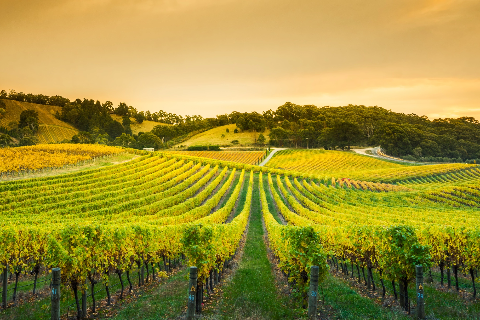
Christian Naudé
The Naudé family has owned vineyards for over 100 years. It was Christian Naudé who decided in the 1980s to champagnize his wines and create a champagne under his own name. Today, Christian's son Magalie and Geoffroy Naudé manage the family business. The 6.5-hectare estate is located between Bonneil and Charly-sur-Marne, in the Marne valley. Their vines, planted with the three main grape varieties of Champagne (chardonnay, pinot noir, meunier) on limestone and chalk subsoils, enable them to produce a wide range of wines.

Christophe
This estate is located in the charming village of Colombé-le-Sec, in the Côte des Bar. It was created in 1950 and has been going on for three generations. The cuvées are made using Pinot Noir and Chardonnay. However, the cuvée Pur’C is solely Chardonnay grown in the plot "Les Graces", the pride of the estate.

Christophe Lefèvre
Christophe Lefèvre, a winemaker by trade, cultivates 4.30 hectares of south-facing vines organically. Pinot meunier, pinot noir and chardonnay are grown and matured in vats to preserve their freshness and fruitiness, then cellared for a minimum of 3 years before being released for sale.

Christophe Mignon
Laurence and Christophe Mignon now work with Loann, their youngest son, the sixth generation of winemakers to join the family adventure. The working methods remain unchanged, as does the spirit of the wines from the 6-hectare estate. The vineyard is planted with 90% meunier grapes on around twenty parcels, located in the heart of the Marne valley, between Festigny and Le Breuil. Alternative methods, now Arterra-certified, are practiced here: use of the lunar calendar from vine to wine, geobiology, phytotherapy, homeopathy, soil tillage, preparation and dynamization. The wines, mostly brut nature, reflect the terroirs in which they come to life. They are simply accompanied by an attentive hand and guided by gentle methods focused on the living.


Château Brondelle
Owned by several families over the years, the Brondelle estate is mentioned in the 1893 Guide Féret. Louis Turtaut acquired it with his wife Andréa in 1927. At the time, only 2 hectares were under cultivation. In 1968, the second generation took over: Denise and Roland Belloc planted vines on the entire property and developed the vineyard through purchases. Since 1995, Jean-Noël Belloc, the third generation, has continued the work, cultivating almost 40 hectares in the Graves, Sauternes, Bordeaux and Bordeaux Supérieur AOCs.

Château Cailleton
Family-owned since 1973, this winegrowing estate is managed by Jean-Bernard Mussotte, harvesting owner in Mazères. The estate is certified HVE (high environmental value). In the Graves AOC, the vines draw their resources from gravelly-sandy soil. The estate is open to visitors from Monday to Saturday.

Château Caillivet
Set on the slopes of the Caillivet hill, the property is surrounded by lush, unspoilt countryside. The origin of the name comes from the Gascon word "calhau", which translates as "pebble", the very essence of the estate's land. The vines are planted on a variety of soils, including gravelly slopes and clay-limestone hillsides. An agronomist, Guilain Latournerie took over the estate in August 2020, and on his arrival initiated the conversion to organic farming. The cuvées have been certified organic since 2023.

Château Canadel
A very young estate, the first vintage left the cellar in 2014. However, the vines have been there for a very long time. Following archaeological excavations in preparation for the construction of their winery, Laura and Vianney Benoist discovered a Roman villa on their estate. Vines, olive trees and fruit trees had been cultivated since Antiquity. Today, 15 hectares of vines are planted on 98 restanques around the hillside of Le Beausset-Vieux, using organic and biodynamic methods.

Château Cazebonne
Jean-Baptiste Duquesne took over Château Cazebonne in 2016. A 35-hectare property in the Graves appellation in Saint-Pierre-de-Mons, his vines are run using biodynamic methods, and in the cellar, his wines are vinified with as few inputs as possible. The estate boasts a wide variety of terroirs (limestone, gravel, clay loam, etc.). What's more, Jean-Baptiste Duquesne has decided to replant many forgotten grape varieties, such as Carménère, Bouchalès and Jurançon Noir. All this enables him to offer a wide range of wines.

Château Champ des Soeurs
Owner Laurent Maynadier knows his 10-hectare estate by the sea inside out. Representing the fourteenth generation of winegrowers on the estate, he vinifies his wines without sulfites and uses only indigenous yeasts. In response to climate change, he has also planted 0.5 hectares of aloe vera in agroforestry.

Château Cheret Pitres
Aurore and Nicolas Deswarte set up at Château Cheret Pitres in 2017 to undertake a joint project focused on the land and a living product. The 16-hectare family estate is located in the historic heart of the Graves terroir. It is typical of this appellation, with soil composed of gravel and pebble deposits mixed with sand and clay due to its proximity to the Garonne River. As independent winegrowers, they are committed to sustainable viticulture with the HVE label.

Château Constantin
Château Constantin was acquired by Anne-Marie and Daniel, the parents, and Camille and Mathilde, the daughters, in 2016. The estate extends over 20 hectares of vines, olive groves and forest, just outside Lourmarin, in the heart of the Luberon regional nature park. Varied terroirs such as clay, limestone and rolled pebbles give the wines freshness and complexity. Camille, in charge of production since 2020, makes a wide range of organic wines, some with the Vin Méthode Nature label. The fully modernized cellar, housed in a 17th-century bastide, is home to numerous containers including foudres, barrels and amphorae.
Food products, kitchen equipment, tableware, service solutions...
See the full list of partners who place their trust in Gault&Millau
All our partners





















































